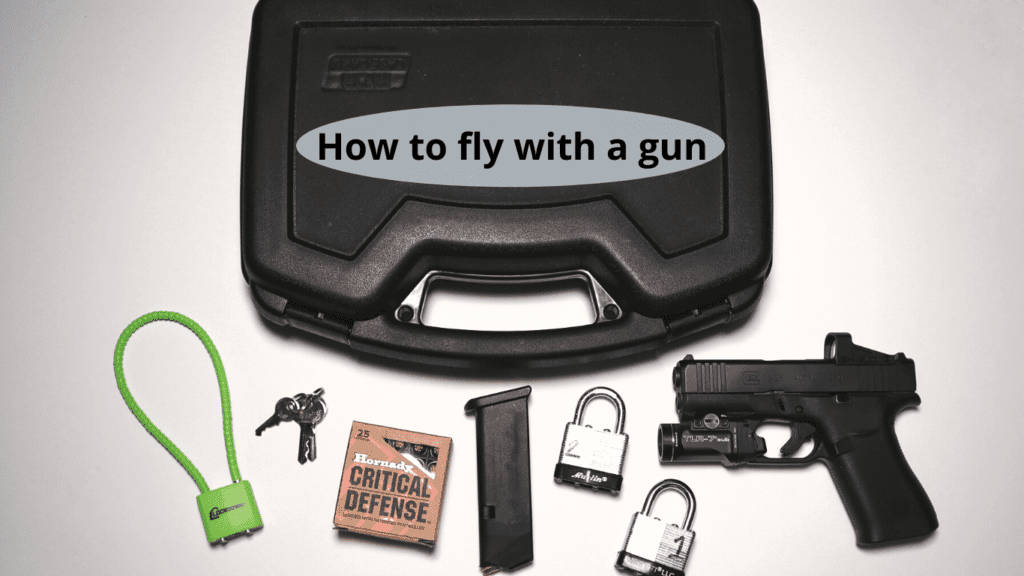How can I fly with my firearm?
“I have travel plans.. can I bring my gun on a plane?” *Preferably without winding up in handcuffs explaining how you’re not a criminal mastermind, you’re just the guy/gal who watched the wrong youtube video tutorial knowing how to fly with a firearm can be a tough nut to crack.
You’ve scheduled some travel, you’re going to a state where you can have your firearm and you want to bring it with you…
NOW WHAT?
Easy. We’ve put together a step by step list on how to go through the process end to end. This list comes from my extensive research coupled with my own personal experience flying with a firearm. Yes, even from states that are not firearm-friendly like Maryland.
*PLEASE NOTE –This is an article specifically about what to do to travel with a firearm. This is not intended to be a how-to for the entire process of air travel, I assume you know how to buy your ticket and check in for your normal flight. I’m writing this artcile from the perspective of someone who wants to bring their everyday carry/personal defense pistol with them, but the same rules apply for multiple firearms/rifles, your case will simply have to be larger.
Dear Readers, Cobalt Firearm Instruction is a participant in the Amazon Services LLC Associates Program, an affiliate advertising program designed to provide a means for us to earn fees by linking to amazon.com affiliated sites. This post may contain various affiliate links. If you click them and make a purchase, it will not cost you a penny more, however a small commission will be paid to CFI to help keep the lights on. We will NEVER endorse something we do not wholeheartedly believe in, ever. Thanks!
Standard legal disclaimer: I am not a lawyer, nothing below should be misconstrued as legal advice or counsel. If you have specific questions regarding your state’s laws contact an attorney in your state and consult travel professionals. All of the information presented below is presented under the assumption that you understand and are already in compliance with all of your state’s laws governing the ownership and transport of firearms and will be traveling to a state where you will legally be allowed to have the firearm and ammunition you plan to bring.
What you need:

Your pre-travel shopping list is delightfully short. Despite all the mumblings about specialty boxes and TSA – Approved Locks , the truth of the matter is that you only need a couple things, some of which you might already have, and none of which necessarily need to be anything special (or expensive!)
1. Short Pad Locks
What is a TSA Approved Lock?
It's is a term tossed around when people talk about traveling with a firearm but what does it really mean and do you need it?
TSA Approved Locks: If a lock has the marketing label of being "TSA Approved" that simply means it is a lock that TSA agents have the ability to open without cutting through it. TSA Agents have specialty keys that some lock companies have incorporated an access point for in their luggage lock designs so if TSA finds a need to inspect your luggage, they don't need to get out the bolt cutters and break your locks to do so. That's it. No special list of lock models you NEED to purchase from, it's simply a convenience for you and the TSA agents to have them in the event your luggage merits close inspection for some reason.
What lock do you Need?
It may well be that you want TSA Approved locks for your luggage but it is NOT a necessity. I have personally travelled multiple times using simple padlocks like the ones shown below under “regular locks.”
As long as, when locked, the case cannot be pried open far enough to access the firearm, your locks are good to go. Simply know that in the rare event TSA needs to access your luggage for close inspection, a standard lock may be cut.
The long cable locks that come with your gun WON’T work for this purpose because even with them locked on the case, the case can be opened far enough to access the gun.
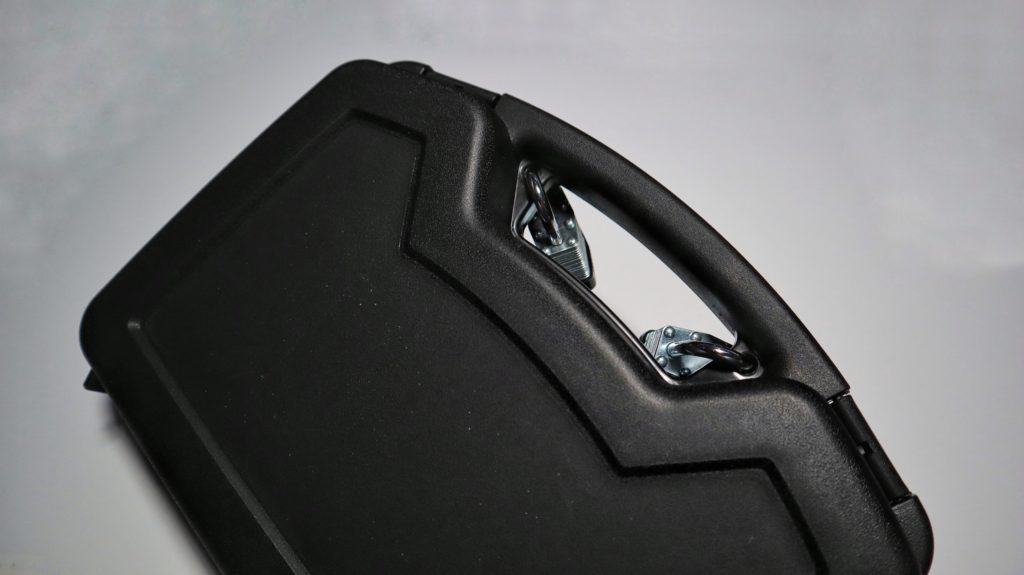
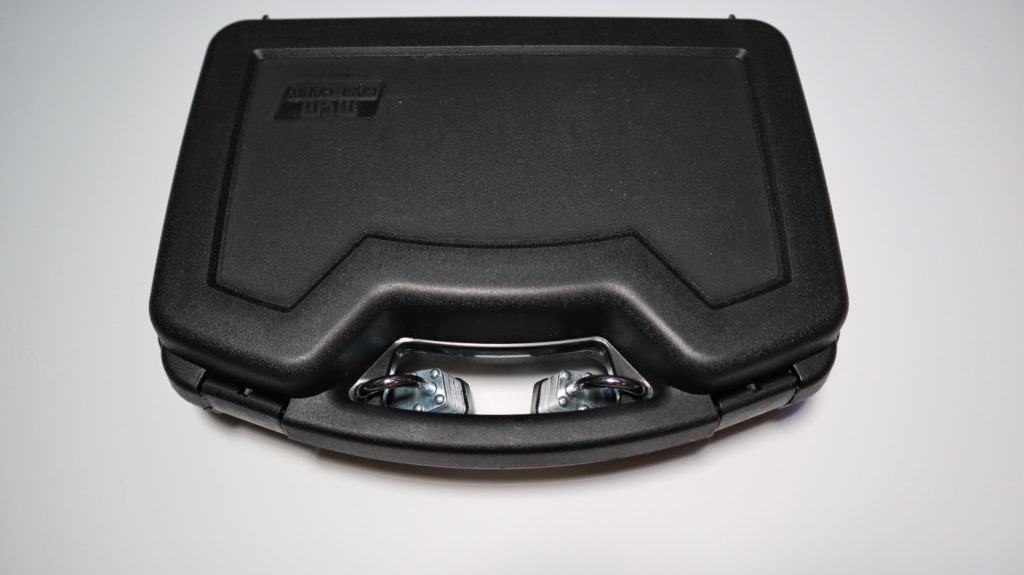
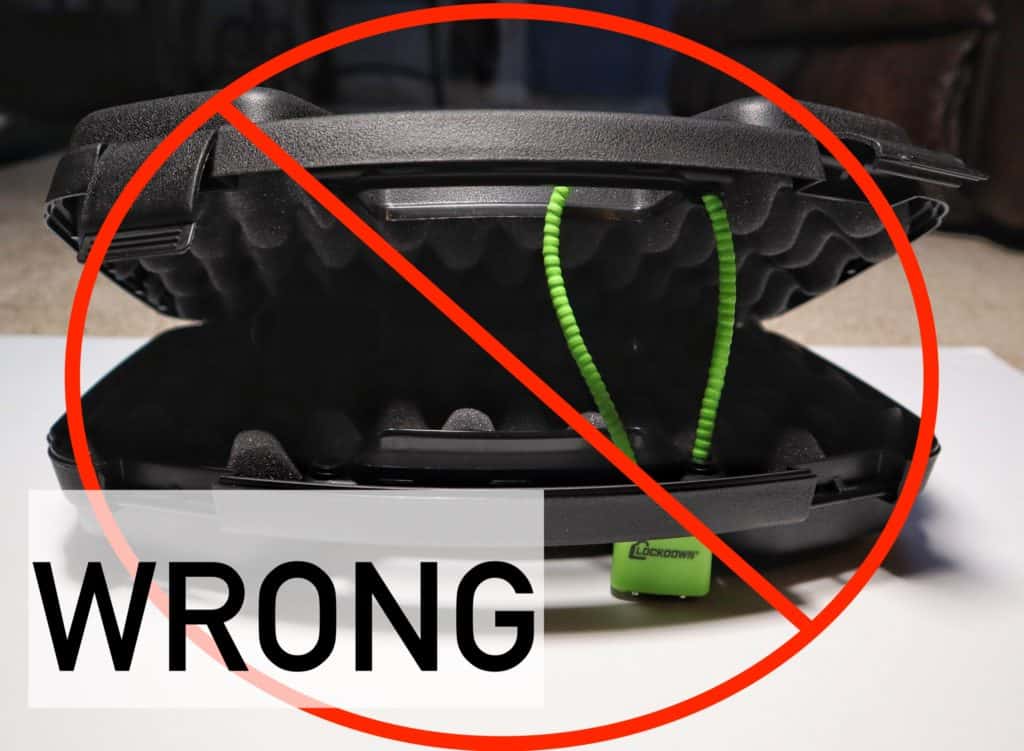
2. Hard Sided Gun Case
What is a TSA Approved Case?
This one is also a bit of marketing. There are a couple simple guidelines to follow with your gun case but you don't need to run out and buy a $100 Pelican case just because you're going to be flying. The case needs to be:
- Hard sided (made of plastic or a like material.) – Cloth or leather “cases” (the zippered bags) are NOT allowed. It needs to have a rigid body and the ability to be locked shut.
- Lockable – Your gun case needs to have a minimum of 1 and preferably 2 or more holes that you can run a lock through (like photographed below.)
What Case do you Need?
Again, this doesn’t need to be an expensive endeavor. I’ve traveled multiple times to and from MARYLAND simply using the “regular case” shown below. Just remember the two key points above, and if you want to treat yourself to a new case and use travel as an excuse, you go right for it and have a ball.
3. Factory Boxed Ammunition
Any ammunition you’ll be traveling with needs to be in a box, YOU CAN’T BRING LOOSE AMMUNITION ON THE FLIGHT EVEN IF IT’S LOCKED IN THE CASE WITH YOUR GUN. If you’re concerned the first time you fly and want to be miles and miles on the right side of the rules, just buy a new box of ammunition from your local gun shop and use that. (Who the heck needs to have their arm twisted to go out and get a few more rounds??)
You are allowed to use other types of boxes for your ammunition (as shown in the examples photographed below from the TSA.) That being said, you might as well go for regular factory boxed ammunition unless you only shoot reloads.


What Ammo Container do you Need?
If you’re traveling with reloaded ammunition you made yourself or just REALLY don’t want to go buy more ammunition, you can use a plastic case like the one shown below that’s designed specifically for ammunition storage.
4. Cable Lock *optional but recommended*
While not specifically stated in the rules, I run a cable lock through my handgun before I put it inside the case. I don’t want to give the folks at TSA ANY REASON to look twice at my stuff or feel the need to rifle through it. If you say it needs to be unloaded, I’m going to unload it, lock it open, and run a cable lock through it. You likely have one of these lying around somewhere if you’ve ever bought a gun. If not, you can pick them up super cheap online or at your local gun shop. Again, this is just for peace of mind, not a hard and fast regulation.

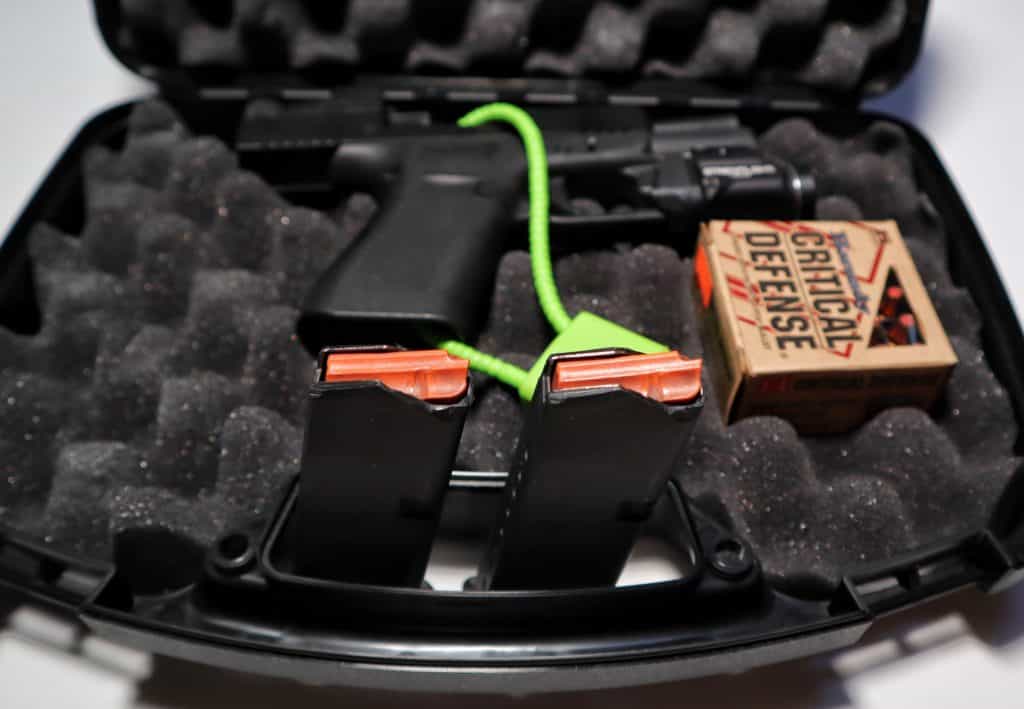
5. Airline Firearm Regulations *optional but recommended*
Of all of the things I did before my first flight traveling with a firearm, this one gave me the most peace of mind. I went onto the website for the airline I was flying and printed out a copy of their specific regulations regarding firearms and brought a copy with me.
The industry term for the governing regulations for travel for each airline is called a “contract of carriage” and most can be found easily online. This was a tip I got from someone who had been flying with guns for a long time and I loved it. If you do this, even if you run into some silly new hire at the baggage counter who freaks out when you say the word “firearm” you can calmly produce their company’s regulations and show them how you are, indeed, in compliance with every single rule.
While finding individual airlines’ rules on firearms isn’t too difficult, we went and hunted down the links to the various main airlines’ “contracts of carriage” and put the links below for you to check nice and easy. Once you go to the link, just search for the term “firearm” on the page (they’re usually very long documents) and print the applicable pages, usually just 1 or 2.
*to search a page on your computer for a specific word: On a windows comp: press “crtl+f” On a mac: press “command+f” – A small window will show up somewhere on the screen, simply type “firearm” into that search box and use the arrows to navigate to the section on firearm regs.
- Delta – Click Item “Shooting Equipment” – their contract of carriage doesn’t mention firearms for some reason but their regulations are listed here.
- United
- Jet Blue
- American Airlines – Like delta, they don’t give you easy access to their full contract, but their regs are found here.
- Frontier – this takes you to the page where they make you download their contract, you search and print it the same way.
- Spirit
- Southwest
- Alaska Airline
What to do.
So you’ve got everything you need put together, it’s time to finalize your packing and get to the airport. If you’re nervous, take a deep breath and trust the process. If you’re someone prone to rushing and missing details, take a deep breath and slow the hell down. While simple, you don’t want to miss something and wind up missing your flight!
1. Pack Your Gun.
- Make sure your gun is COMPLETELY unloaded.
- Make sure all magazines you’re bringing with you are completely unloaded. (Any ammunition you fly with needs to be in a box.)
- Make sure all of the ammunition you will be bringing is in the proper packaging (see above.)
- Make sure you have all of your keys to the various locks (most locks come with two keys, I like to make two separate sets of keys each with every one that I’d need just in case.)
- Cable lock your gun if you plan to do so (I would.)
- Perform one last double-check and Lock the case.
- If it will fit, you can put this locked case in your normal checked luggage. I highly recommend doing this if size permits. You save a boatload on checked bag fees and it’s less conspicuous.


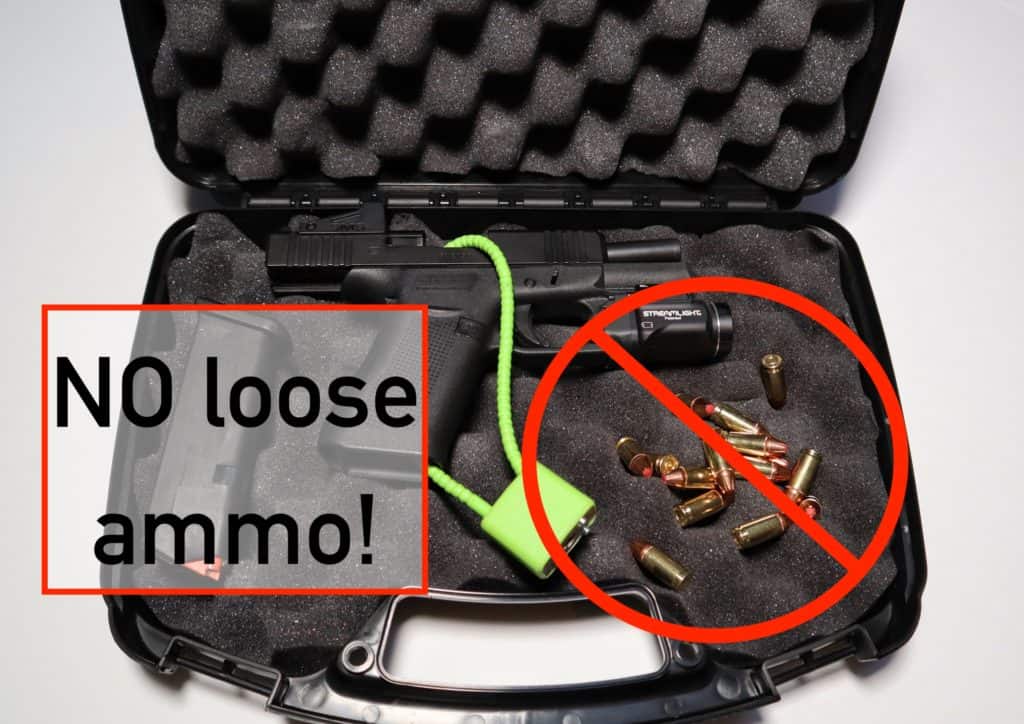
2. Check your luggage
- Arrive at the airport about 2 hours before your domestic flight. Yes that’s a lot of lead time, yes I’ve always had time to spare once I get through security, no I don’t plan to ever do it another way. Give yourself time to do it right.
- Any luggage containing a firearm MUST BE CHECKED, NOT CARRY ON!
- Most airlines require you use one of their little kiosks to pre-tag your checked luggage, so do that before you go up to the counter just like normal, this is usually where you print your boarding pass if needed as well.
- Get in line to check your luggage and wait.
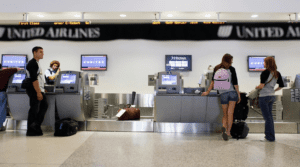
- Have your ID, lock keys, and boarding pass handy in your pockets as you may need them here.
- When it’s your turn, tell the person behind the counter “I need to declare a firearm in my checked luggage.” – Don’t forget to say “hello” first, be a human.
- Open your luggage to show the firearm case, DON’T OPEN THE CASE WITH THE FIREARM UNLESS INSTRUCTED.
- Follow their lead. Each airline handles this process differently. They will tell you what you need to do. They will definitely need to see your ID. Some may ask you to open the case, some may question you casually about the contents of the case and how it is packed, don’t worry! You followed all the steps, you have the printed regs to back you up, you’re good to go.
- Regardless of the airline, they will have you sign a “declarations tag” that will then go in your luggage with the firearm case or attached to the case itself if you’re just checking the gun case alone. They all look different but they’re something like the photos below. Some airlines have you keep a stub from it, some don’t.
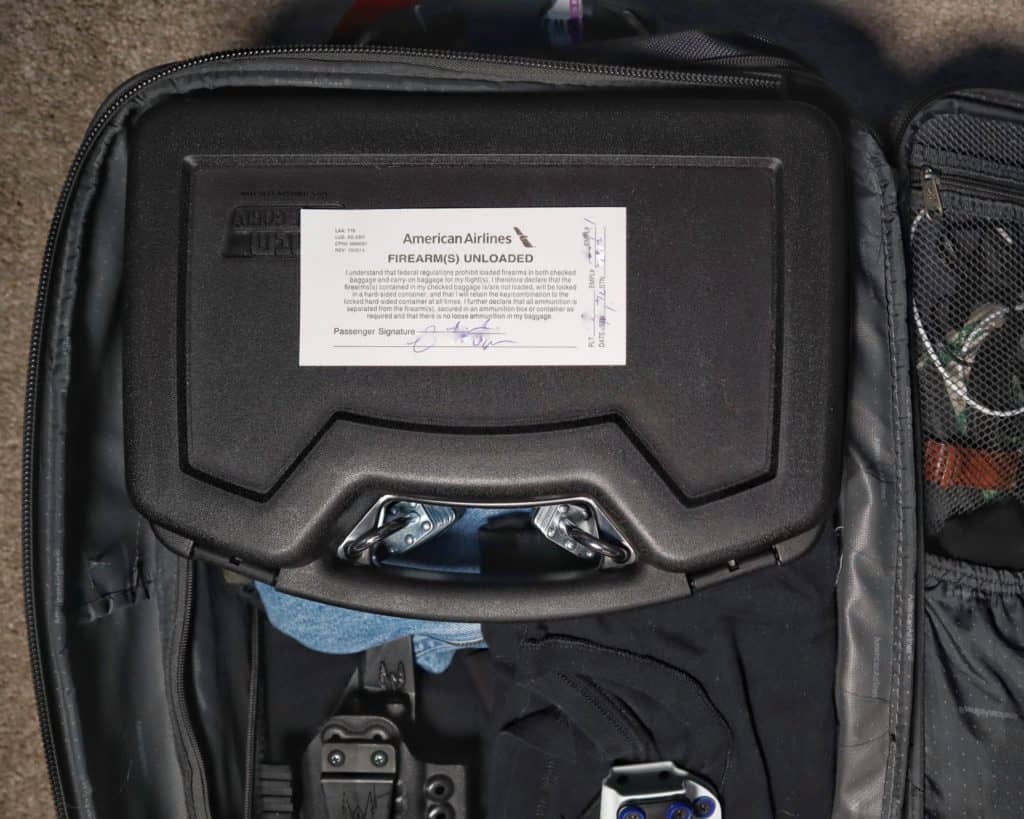
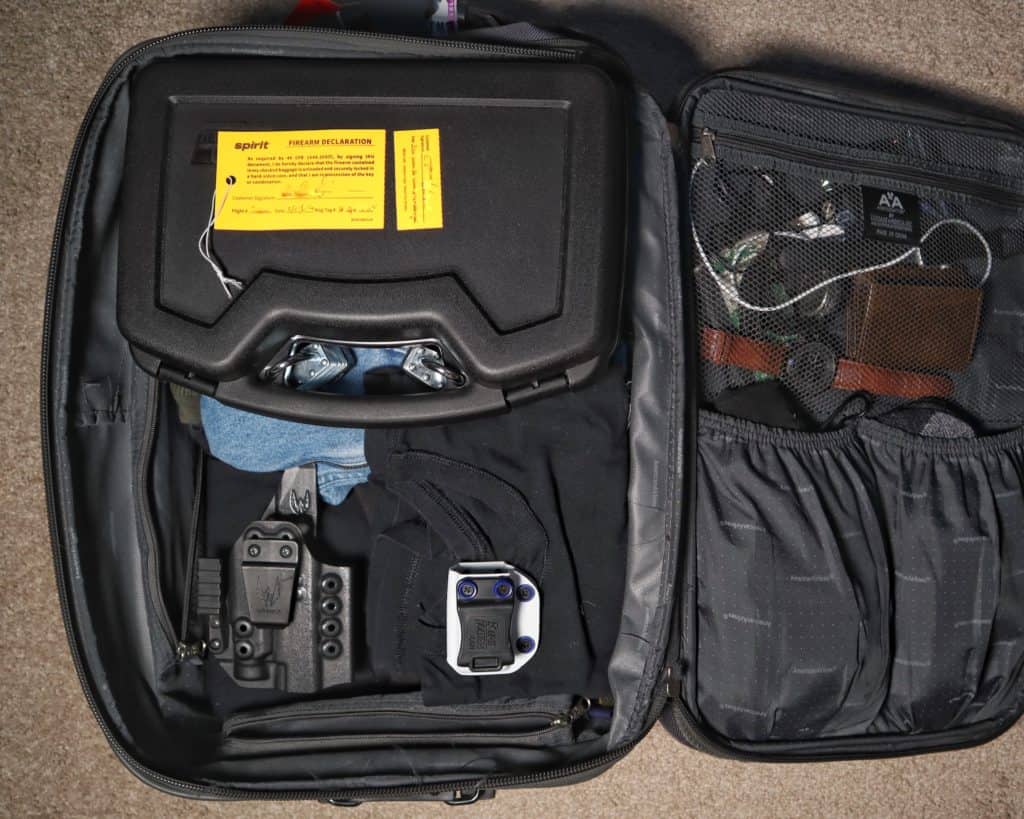
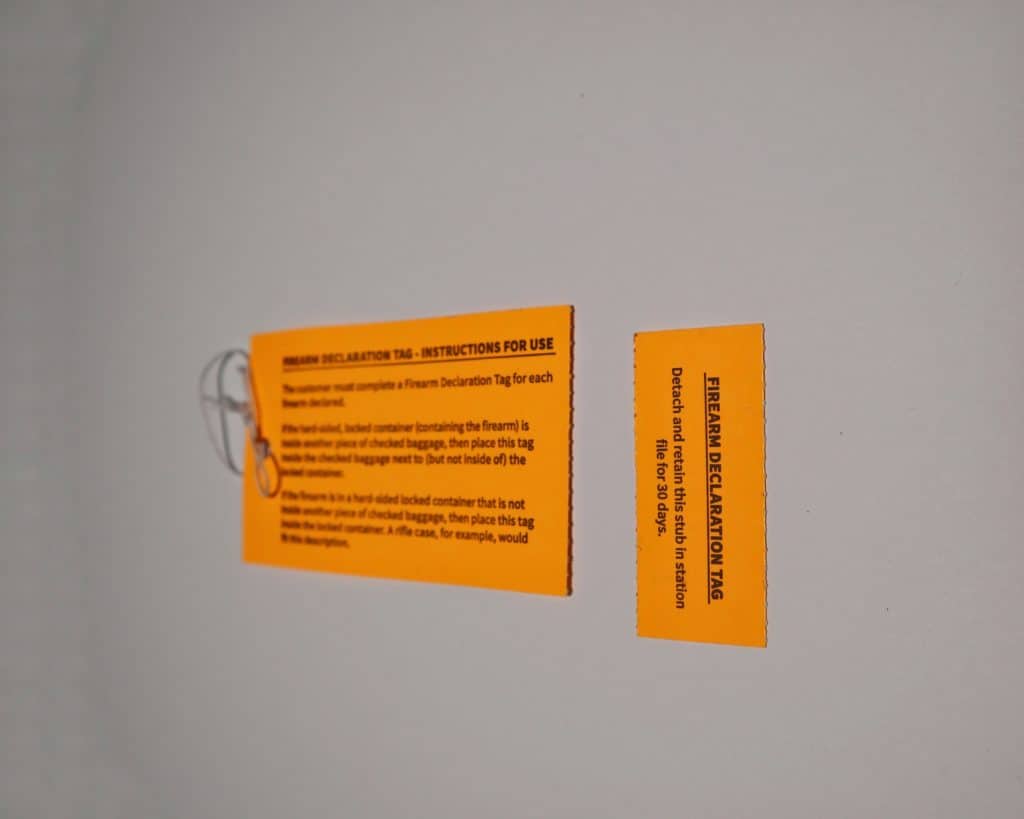
I have even had some airlines take me to a second location for a few more questions from someone different and I stood by while they ran the case/luggage through some sort of scanner. It’s all normal and usually handled promptly.
**Note: some airlines have a separate line for folks checking firearms vs. just checking a regular bag. Don’t worry if you get in the wrong one, I have before. It has been my experience that if you get in the wrong line and have to change lines once you get all the way to the front, they send you to a shortcut line for the place you’re actually supposed to be. Sort of like “yeah man you’ve already waited in this whole line, not going to make you do it again.” Consider it a small fleeting example of airline courtesies, I’m sure soon they’ll find a way to charge a fee for it.
3. Get to your flight & fly
Your job on this leg of the journey is over. Find your gate, board when it’s your turn, pray you aren’t seated next to a crying baby, and enjoy your flight.
4. Collect your Luggage
Once you disembark, go straight to the baggage claim area assigned to your flight. Only the DIREST of pee breaks should intervene here as you want to be there at the front when the luggage starts coming out (I’ll explain in a second.)
- Find the attendant for your flight’s luggage. Right by the baggage carousel there should be someone (likely with a walkie talkie) in the uniform for your airline, if there is not, go to someone at the nearest desk and ask for them.
- Tell the luggage attendant that you were flying with a firearm that was declared and ask where it will be coming out, they will likely already know about your bag.
- *Pro Tip: Have this conversation close to the opening in the wall where the luggage comes out so you can keep an eye open if your bag comes out with regular luggage*
- If your bag is not slotted to come out with regular luggage (as it often won’t be) the attendant will tell you where to wait and someone special will be bringing your luggage directly to that attendant.
- The attendant will then ask for your declarations stub if they had you take one, and will definitely ask for ID. Your bag will likely be tagged with a special tag that looks something like this:
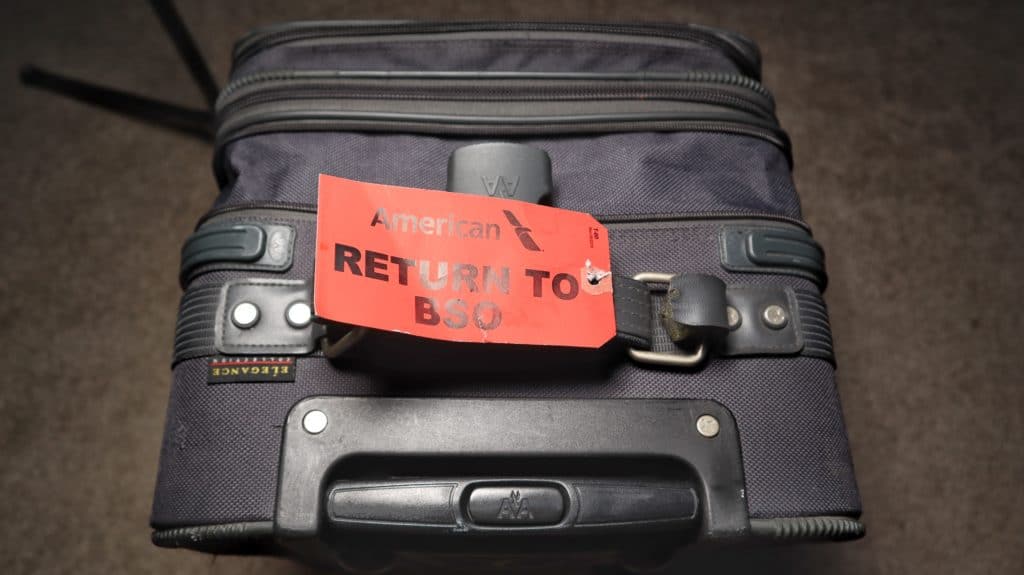
*Bad Airline Luggage Handling Warning!
Sometimes your airline might not handle your precious cargo properly (shocker!) and allow it to get mixed in with regular luggage.
THIS IS WHY IT'S SO IMPORTANT TO BE AT THE LUGGAGE AREA RIGHT AWAY. I have flown with airlines where my luggage with a firearm has been sent out on the regular luggage carousel. We've all heard the horror stories about people having their luggage stolen from the carousel, now imagine that luggage has a gun in it...
Make sure you're at the baggage claim first just in case this happens to you so you can quickly collect your bag as it comes out onto the conveyor belt. While rare, if this ever happens to you, you don't need to go find someone and tell them you picked up your gun, you can simply take your bag and leave.
5. Conclusion
Congratulations. You’ve successfully flown with your firearm. Easier than you thought it was going to be wasn’t it? Let’s do a quick recap for those of you who skipped to the bottom waiting to see a step-by-step bullet point list. I know I caught at least a few of you with this one! I recommend highly you read through all the information above but here’s a quick recap:
- Buy a hard sided case with holes you can pass a lock through (photos above)
- Buy at least 1 padlock short enough so that you can’t access the firearm while the lock is on the case
- Print off your airline’s regulations regarding traveling with a firearm (details and links above) to bring with you on your travel day.
- COMPLETELY UNLOAD both the firearm and all magazines you will be traveling with
- Put all of your ammunition (under 11 lbs worth) in a cardboard/plastic box or even better go buy a new box of ammo
- *optional* run a cable lock through your gun
- Lock the firearm, boxed ammunition, and empty magazines in the hard sided case
- If it will fit, put your gun case in your regular checked luggage (it’s cheaper and less conspicuous than checking an obvious gun case.)
- Go to the airport
- Pay for and Pre-tag your checked luggage at the kiosks in front of the checked luggage counter (most airlines make you do this now) YOUR FIREARM MUST TRAVEL IN CHECKED LUGGAGE, IT CANNOT BE A CARRY ON!
- Declare that you’re traveling with a firearm in your checked luggage when it’s your turn at the counter.
- Follow instructions, answer questions, give them your ID and fill out your declarations tag. Take the stub with you and put it in your wallet if they give you one.
- Go through security and fly to your destination
- Immediately go to the luggage pick up area upon disembarking from your flight.
- Find the attendant working for your flight and tell them you have a declared firearm in your luggage.
- *pro tip 1 – talk to the attendant by the hole in the wall where the luggage comes out onto the belt so you can spot your luggage immediately if the airline screws up and puts your bag in with regular luggage
- Follow the attendant’s instructions to produce your ID and declarations stub if they gave you one.
- Collect your luggage. DO NOT take your gun out in the airport to put it on your person.
- *pro tip 2 – If your bag has a special tag on it from the airline (like the red one photographed above) remove it immediately as this is essentially a flashing sign to anyone who knows about these things that you’re carrying around a gun.
Questions, comments, concerns? Let us know in the comments or send us a message! Safe travels and have a great day.
Stay Smart. Stay Safe. Never Stop Improving.
– Chris Murphy

